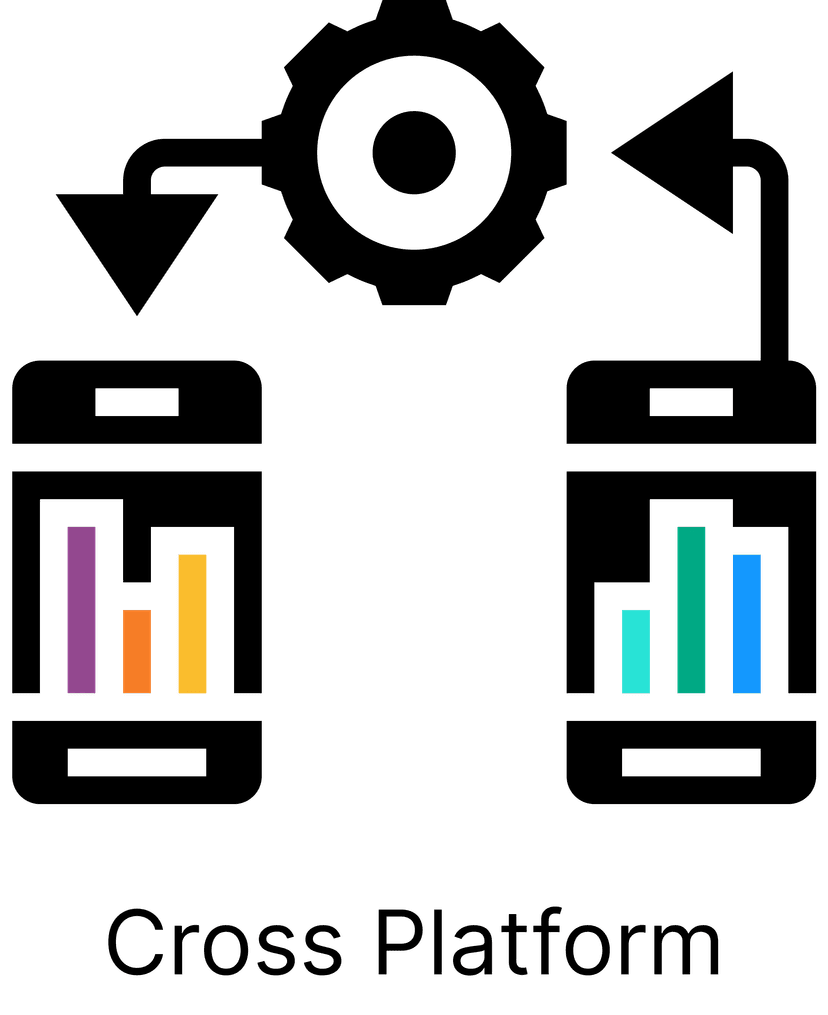Cross Platform

What is a cross platform?
Definition
Cross platform refers to the development of software, applications, or products that can run on multiple operating systems, devices, or platforms without requiring any additional modifications or adaptations.
Analogy
Think of cross platform as a universal remote control. Just like a universal remote can control multiple devices like a TV, DVD player, or sound system, cross platform development allows a single application to work seamlessly across various devices and operating systems.
In other words
Cross platform development enables a single application to function on multiple platforms with minimal changes.
Why is cross platform important?
It's one thing to know what cross platform is, but that is worthless if you don't know why you should know what cross platform is in the first place. Let's break down the importance of this tech term based on two high-level categories. We'll walk through an explanation as well as provide a score, 1-10, that shows you how much you should care about cross platform.
Pre-Product: 3/10
If you do not have a product yet, cross platform may not be your top priority. At this stage, you should focus on validating your idea, understanding your target audience, and defining your product's core features. However, it's still essential to be aware of cross platform development, as it can help you plan for future scalability and reach a broader audience once your product is ready.
Live Product: 5/10
If you have a live product, cross platform becomes more important. By developing a cross platform application, you can reach a wider audience, reduce development costs, and simplify maintenance. It's essential to ensure that your product works seamlessly on various devices and operating systems to provide a consistent user experience, which can ultimately lead to increased customer satisfaction and retention.
Examples of cross platforms
So you know what cross platform is, by definition. You know if you should care about it or not depending on your situation as a business/company/product. To dig in deeper, we will walk through some tools and processes so we can make sure you really have a solid grasp on cross platform.
Cross Platform Development Tools
- React Native: A popular framework for building cross platform mobile applications using JavaScript and React. It allows developers to write code once and run it on both Android and iOS devices.
- Flutter: Developed by Google, Flutter is an open-source UI toolkit for creating cross platform applications with a single codebase. It uses the Dart programming language and provides a rich set of pre-built widgets for designing responsive user interfaces.
- Xamarin: A cross platform app development framework that uses C# and the .NET framework to build native applications for Android, iOS, and Windows devices.
- Electron: A framework for building cross platform desktop applications using web technologies such as HTML, CSS, and JavaScript. Electron allows developers to create native-like applications that can run on Windows, macOS, and Linux.
Key Takeaways:
- Cross platform development enables a single application to function on multiple platforms with minimal changes.
- If you do not yet have a product, cross platform development may not be your top priority, but it's essential to be aware of it for future scalability.
- If you do have a product, cross platform development becomes more important to reach a wider audience and provide a consistent user experience.
- React Native, Flutter, Xamarin, and Electron are examples of popular cross platform development tools.

